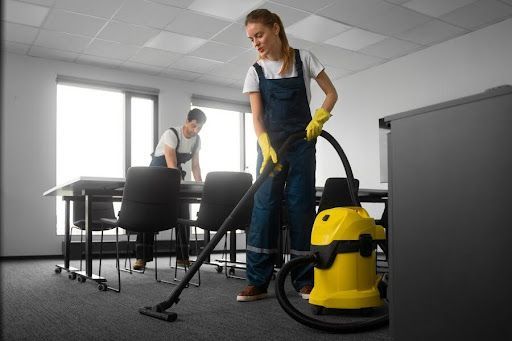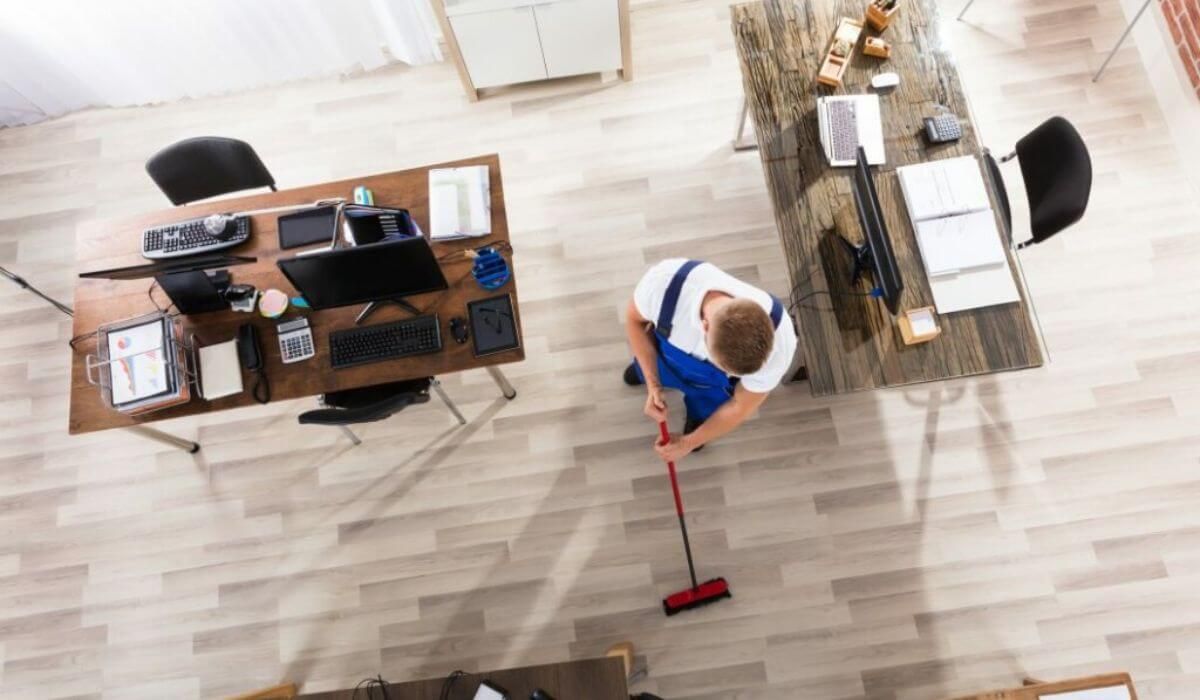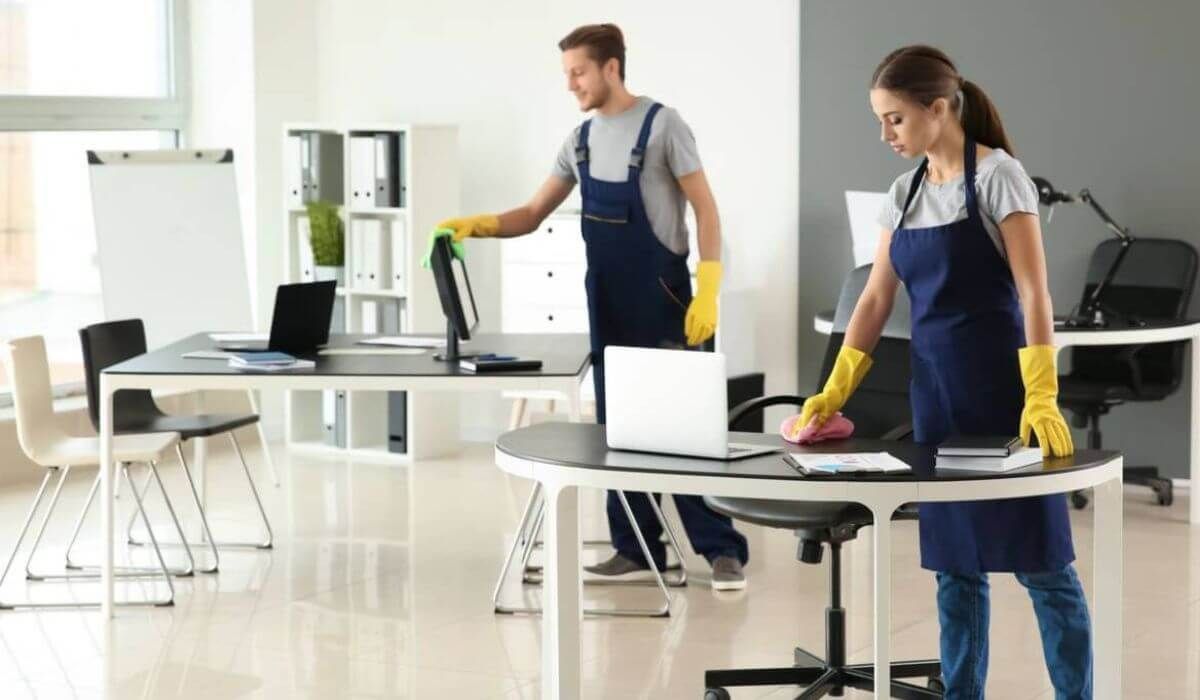Effective Tips for Cleaner Carpets and Upholstery
Keeping office carpets and upholstery in top condition is crucial to creating a healthy, professional workspace. High foot traffic, occasional spills, and daily dust accumulation can quickly wear down carpets and upholstery, affecting both appearance and air quality.
Regular office carpet cleaning not only extends the life of these surfaces but also contributes to a fresher, more inviting environment for employees and visitors. In this guide, we cover essential tips for cleaning and maintaining your office carpets and upholstery, ensuring a cleaner and more productive workplace.
Why Is Office Carpet Cleaning Important?
Office carpet cleaning goes beyond aesthetics, playing a role in health, productivity, and overall workplace ambiance. Here’s why it’s essential:
The Impact of Clean Carpets on Employee Health
Clean carpets are vital for
indoor air quality and
employee well-being. Dirt, dust, and allergens accumulate quickly in high-traffic areas, which can contribute to poor air quality and health issues like allergies or respiratory problems. Regular carpet cleaning removes these contaminants, helping to create a healthier workspace and reducing potential health risks for employees. Clean carpets also reduce odor build-up, ensuring that the office smells fresh and inviting.
Enhancing Office Aesthetics and Professionalism
A clean and well-maintained carpet significantly enhances
first impressions and reflects a commitment to a
professional environment. For clients, partners, and new employees, clean carpets and upholstery signal that the business values hygiene and professionalism. Conversely, stained and worn carpets may create a negative impression. Regular cleaning keeps your office looking polished and reinforces a culture of care and attention to detail.
Daily Maintenance Tips for Office Carpets and Upholstery
Implementing daily maintenance routines can extend the life of your carpets and upholstery,
preventing the need for frequent deep cleans. Here are some practical tips:
Vacuuming High-Traffic Areas Regularly
For areas with heavy foot traffic,
routine vacuuming is essential. High-traffic zones like lobbies, hallways, and entryways attract more dust and dirt, which can quickly settle into carpet fibers. Set a
cleaning schedule for these areas, vacuuming at least once daily to remove surface debris and prevent it from embedding deep into the carpet. Consistent vacuuming also reduces wear on carpet fibers, extending the carpet’s overall lifespan.
Spot Cleaning Techniques for Stains and Spills
Immediate
stain removal is critical for maintaining carpet quality. If coffee, ink, or other liquids spill, address them immediately using a
non-toxic cleaner and spot-cleaning method. Begin by blotting the spill gently with a clean, absorbent cloth to remove as much liquid as possible, avoiding scrubbing as it can spread the stain. For stubborn stains, consider using eco-friendly spot removers that are safe for the carpet and the environment.
When to Schedule Professional Office Carpet Cleaning
While daily upkeep is essential, periodic professional cleaning helps eliminate deep-seated dirt and refreshes the carpet’s appearance. Here’s when to consider hiring a professional service:
Signs It’s Time for a Deep Clean
If your carpet shows signs of discoloration, embedded stains, or persistent odors, it may be time for a
deep cleaning. Look for
carpet wear signs like dullness, matted fibers, and accumulated grime. Professional cleaning services use advanced equipment to lift embedded dirt and restore the carpet’s appearance, often achieving results that standard vacuums and cleaners can’t match.
How Often Should You Hire Professionals?
Most office carpets should be professionally cleaned every
6-12 months, depending on foot traffic and specific workplace conditions. For high-traffic areas, scheduling a deep clean every six months ensures your carpets remain in optimal condition, while low-traffic areas may only require an annual clean. Regular professional cleanings not only extend the carpet’s lifespan but also maintain a clean, hygienic environment.
Eco-Friendly Cleaning Products for Office Carpets and Upholstery
Choosing eco-friendly products for carpet and upholstery cleaning supports a sustainable workplace and creates a healthier environment for everyone.
Benefits of Using Green Cleaning Solutions
Non-toxic cleaners reduce indoor pollution and minimize exposure to harsh chemicals. For workplaces, this means fewer chemicals in the air and less risk of skin or respiratory irritation for employees. Eco-friendly products are also gentler on carpet fibers, reducing the likelihood of wear and tear. Switching to green cleaning solutions is a straightforward way to make your office more sustainable while preserving your carpets.
Recommended Green Products for Commercial Use
Many brands now offer effective
environmentally friendly carpet shampoos and
upholstery cleaners. Look for products labeled biodegradable, non-toxic, or certified by reputable organizations such as Green Seal or EcoLogo. When using green products, always follow application instructions to ensure effective cleaning and to protect carpet fibers and upholstery.
Conclusion
Regular office carpet cleaning is essential for maintaining a cleaner, healthier workspace and ensuring your carpets and upholstery last. Through daily maintenance, spot-cleaning techniques, and scheduled deep cleaning, you can achieve an office environment that’s both attractive and functional. By choosing eco-friendly products, you also contribute to a more sustainable workplace.
Ready to Transform Your Office Space?
Create a cleaner, fresher office environment by scheduling a professional carpet and upholstery cleaning service in Sydney. Contact us today to book an appointment and see the difference a professionally cleaned workspace can make!
FAQs about Office Carpet Cleaning
How often should office carpets be professionally cleaned?
Depending on foot traffic and workspace activity, carpets should typically be cleaned every 6-12 months to maintain a clean, hygienic office environment.
Can eco-friendly products be used for office carpet cleaning?
Yes, there are many green cleaning solutions suitable for commercial carpets and upholstery. These products are both effective and safe for the environment, offering a healthier option for
office cleaning.
What is the best way to remove coffee stains from office carpets?
To remove coffee stains, blot the area with a clean, absorbent cloth, apply a non-toxic spot cleaner, and let it sit for a few minutes. Blot again to lift the stain, then vacuum once the spot is completely dry.
How long does it take for carpets to dry after professional cleaning?
Drying time varies, but carpets generally take 4-8 hours to dry after a professional cleaning, depending on the cleaning method and room ventilation.



